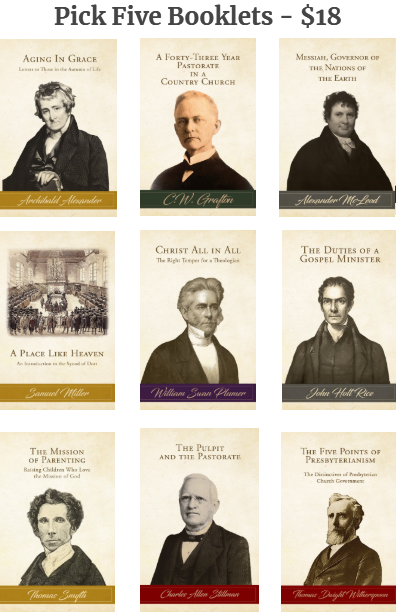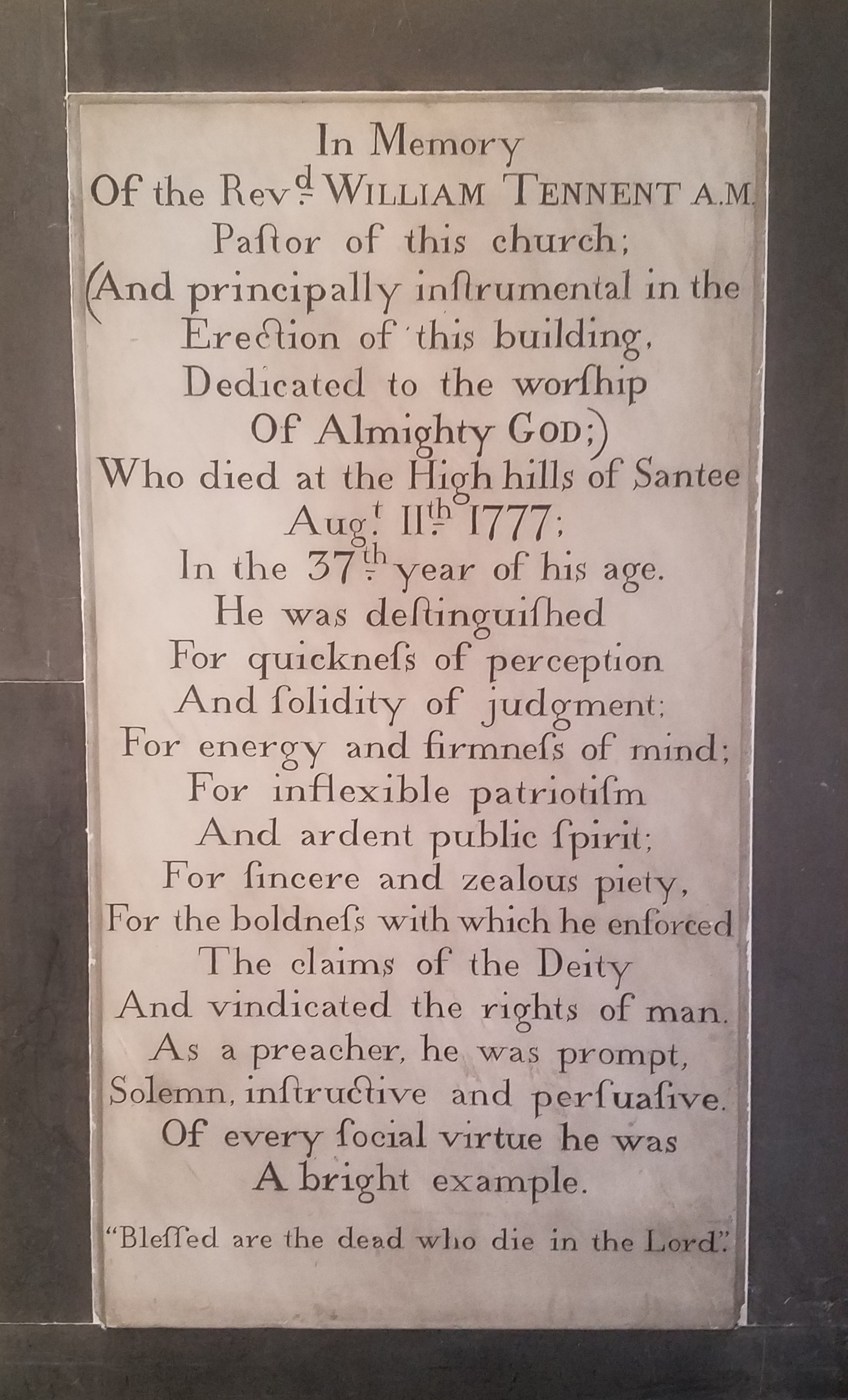Receive our blog posts in your email by filling out the form at the bottom of this page.
Dear Friends,
As summer draws to a close, we wish to give an update on what’s been happening at Log College Press. Our virtual shelves are filling up with old Presbyterian books, articles, poetry and manuscripts. We recently reached a milestone of sorts - there are now over 20,000 works available to read at Log College Press.
In a year of celebration and remembrance, we have previously paid tribute to John Witherspoon’s 300th birthday (Feb. 5, 1723); Thomas Murphy’s 200th birthday (Feb. 6, 1823); the 100th anniversary of Robert P. Kerr’s passing (March 25, 1923); the 250th anniversary of Joseph Caldwell’s passing (April 21, 1773); the 150th anniversary of William H. McGuffey’s passing (May 4, 1873); A.A. Hodge’s 200th birthday (July 18, 1823); the 150th anniversary of Gardiner Spring’s passing (Aug. 18, 1873); the 150th anniversary of Thomas Smyth’s passing (Aug. 20, 1873); and we are looking ahead to the 300th birthday of Samuel Davies (Nov. 3, 1723). These anniversaries are reminders of the rich heritage of American Presbyterianism, and how these men have contributed in their own ways to shaping our history. As we like to say, there is no time like the present to study the past.
Meanwhile, to return to the here and now, members of the Dead Presbyterian Society have special access to certain features on this website, which include the Early Access and Recent Additions page, as well as the DPS quote blog, and the Log College Review. We wish to draw your attention to notable works of interest that have added recently.
Some highlights at the Early Access page:
Samuel Davies, Travel Diary (1753-1754) — A kind and helpful supporter of our work noticed that some handwritten manuscript journals have been digitized by the Union Theological Seminary in Richmond, Virginia, including Davies’ diary which covers a portion of his trip to Great Britain to raise funds for the College of New Jersey (Princeton).
William Henry Foote, Journal (3 volumes, 1794-1869) — This is a remarkable manuscript journal (written in beautiful penmanship) which covers almost the entirety of Foote’s life, and includes newspaper clippings, family history, ecclesiastical records (some pertinent to the founding of the Presbyterian Church, C.S.A.), and much more.
Francis Alison, Peace and Union Recommended (1758) — A notable sermon preached by an Old Side divine at the opening of the synod at which the Old and New Sides were reunited.
David Bostwick, Self Disclaimed and Christ Exalted (1758) — A powerful sermon on the words from John 3:30: “He must increase but I must decrease.”
Jonathan Dickinson, A Sermon, Preached at the Opening of the Synod at Philadelphia, September 19, 1722 (1723) and A Vindication of God’s Sovereign Free Grace (1746).
Samuel Finley, The Curse of Meroz; or, The Danger of Neutrality, in the Cause of God, and Our Country (1757) — A notable patriotic sermon preached during the French and Indian War.
Some highlights at the Recent Additions page:
Charles Hodge, The Intuitions and Views of Future Punishment (1878) — This is one the last published articles by Dr. Hodge.
Several early published poems by James Waddel Alexander dating from 1824 to 1827.
James Power Smith, Quit You Like Men: Sermon Preached at the Virginia Military Institute, June 24th, 1906 (1906) — A contribution from a kind supporter of our work.
John Witherspoon’s 9-volume set of Works (1815);
Articles and reviews by Samuel Garfield Craig, Ernest T, Thompson, A.A. Hodge, George T. Purves, Andrew W. Blackwood, and many more.
A thesis paper by Nancy Lynn Taylor Sorrells, “I Mourn in Bitterness Over the State of Things”: Francis McFarland’s Community at War, 1860-1866 (1995).
On the Log College Review:
Reviews by Jonathan Peters: Review of Francis R. Flournoy, Benjamin Mosby Smith: 1811-1893 (1947) [2023], and Review of William E. Thompson, In Stonewall’s Long Shadow: James Power Smith, Aide de Camp (2020) [first appeared in The Confessional Presbyterian 18 (2022)].
Meanwhile, please feel free to browse the many resources available to our readers in print and in digital format. We appreciate hearing from our readers if they find matters needing correction, or if they have questions about authors or works on the site, or if they have suggestions for additions to the site. Your feedback helps the experience of other readers as well. Thank you, as always, for your interest and support. Stay tuned for more good things to come.



















